Manufacturing Equipment

What is the impact of smart manufacturing on industrial energy consumption ?
Smart manufacturing, or Industry 4.0, is transforming industrial operations through AI, IoT, and robotics to boost efficiency and sustainability. One major benefit is its impact on reducing energy consumption in industries. This article discusses how smart manufacturing can aid in decreasing energy usage: 1. **Optimization of Production Processes**: Real-time data analytics and predictive maintenance techniques lead to less energy waste and higher efficiency. Sensors monitor equipment performance to reduce downtime and energy consumption during repairs. 2. **Automation and Robotics**: Replacing manual labor with automated machines and robots results in higher precision and consistency while minimizing energy usage. Smart technologies also enable better resource allocation for reduced energy consumption. 3. **Energy Management Systems (EMS)**: EMS are crucial for monitoring and controlling energy consumption. They provide insights into energy usage patterns, allowing companies to identify areas where energy savings can be achieved. Implementing energy-saving measures based on EMS data can significantly cut energy consumption and costs. 4. **Renewable Energy Sources**: Smart manufacturing promotes the use of renewable energy sources like solar and wind power to reduce dependence on non-renewable sources like fossil fuels. This contributes to environmental sustainability by lowering greenhouse gas emissions. Integrating smart grids into industrial facilities further optimizes energy distribution and enhances efficiency. Overall, smart manufacturing significantly impacts industrial energy consumption by optimizing production processes, incorporating automation and robotics, implementing energy management systems, and promoting renewable energy sources. These advancements not only reduce energy waste but also contribute to environmental sustainability by lowering greenhouse gas emissions.
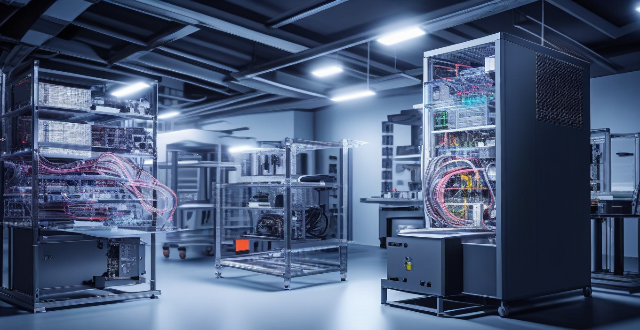
How has the adoption of Industry 4.0 technologies influenced energy efficiency in manufacturing ?
Industry 4.0 technologies significantly impact energy efficiency in manufacturing by enabling precision and optimization, data-driven decision making, resource management, promoting sustainability, and enhancing employee engagement. These advancements contribute to a future where smart manufacturing and sustainability are intertwined.
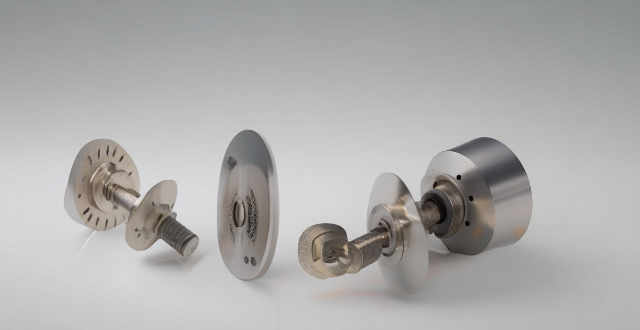
In which industries are permanent magnet motors most commonly used ?
Permanent magnet motors are utilized across a wide range of industries due to their efficiency and reliability. Key sectors include the automotive industry, where they power electric and hybrid vehicles and are used in automated manufacturing. In aerospace and defense, PM motors are crucial for aircraft systems and military applications. Appliance manufacturing benefits from PM motors in household and commercial equipment. The medical sector employs them in imaging equipment and surgical tools. Manufacturing and process control use PM motors in CNC machinery and pumps/valves. Renewable energy sectors such as wind turbines and solar tracking systems also rely on these motors. Consumer electronics, including audio and visual equipment as well as toys and hobbyist products, make use of permanent magnet motors for various functions.
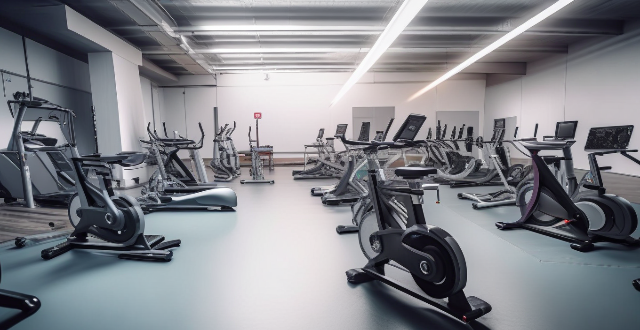
How has 3D printing technology changed the way we design and produce sports equipment ?
3D printing technology has revolutionized the sports equipment industry by enabling customization, rapid prototyping, complex designs, and on-demand production. This innovation benefits athletes with personalized gear, faster design cycles, optimized performance, and sustainable practices.

How do safety regulations affect the manufacturing industry ?
Safety regulations are critical in manufacturing for worker safety, environmental protection, and product quality assurance but can increase costs and administrative burden while potentially slowing innovation.

How do safety regulations influence the use of protective equipment in the workplace ?
Safety regulations play a crucial role in ensuring that workers use protective equipment in the workplace. They enforce compliance by requiring employers to provide necessary protective equipment to their employees, mandate regular training sessions for workers about the importance of using protective equipment, conduct safety inspections periodically to ensure that protective equipment is up-to-date, functional, and used correctly, and drive continuous improvement based on new technologies, changing work environments, and lessons learned from incidents. These measures collectively create a safer work environment for all employees.

What are the latest trends in sports equipment technology ?
The latest trends in sports equipment technology include wearable devices, virtual reality training, augmented reality coaching, smart gym equipment, and biometric sensors. These innovations aim to improve athlete performance by providing personalized feedback and optimizing workouts.

How have advancements in materials science impacted sports equipment design ?
Advancements in materials science have significantly impacted sports equipment design, improving durability, performance, safety, comfort, and customization. Examples include carbon fiber bats, advanced composite tennis racquets, titanium golf clubs, aerodynamic cycling helmets, shock-absorbing running shoes, breathable athletic apparel, customized orthotics, and personalized mouthguards. These innovations not only enhance the athletes' performance but also reduce waste, making it an environmentally friendly option.

What are the best sports equipment for beginners ?
The article provides a list of seven essential pieces of sports equipment for beginners, including yoga mats, dumbbells, resistance bands, jump ropes, foam rollers, kettlebells, and swim goggles. Each piece of equipment is described in terms of its benefits, uses, and recommendations for beginners. The article emphasizes the importance of having the right equipment for success in any sport and encourages beginners to prioritize safety and proper form when using new equipment.

How can I find the best deals on sports equipment online ?
Finding the best deals on sports equipment online requires research, patience, and using various strategies. These include comparing prices across different retailers, looking for discount codes and promotions, shopping during sales and holidays, considering buying used or refurbished equipment, and joining loyalty and rewards programs. By following these tips, you can save money while getting high-quality gear for your favorite sports activities.

How do I properly use and maintain electrical equipment ?
Electrical equipment requires proper use and maintenance to ensure safety, efficiency, and longevity. Key tips include reading the manual, inspecting before use, avoiding overloading, keeping away from water, cleaning regularly, checking wiring, replacing parts as needed, storing properly, unplugging when not in use, using surge protectors, and avoiding DIY repairs for significant issues. Following these guidelines helps extend the lifespan of electrical equipment and minimizes risks associated with their use.

What are some eco-friendly options for sports equipment ?
Eco-friendly options for sports equipment include using recycled materials, sustainable resources like bamboo and organic cotton, reusable water bottles, energy-efficient gym gear, secondhand items, and repairing damaged equipment.
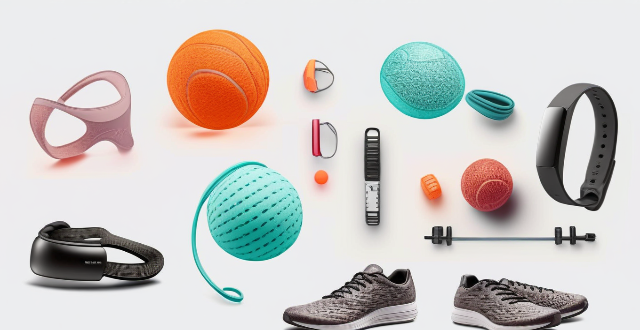
What are the latest innovations in sports equipment ?
The latest sports equipment innovations include smart wearable devices, improved materials and designs, virtual and augmented reality technologies, and connected gym equipment. These advancements aim to enhance performance, safety, and convenience for athletes at all levels.

Can you recommend any budget-friendly gym equipment ?
The text offers recommendations for budget-friendly gym equipment, including multi-functional fitness equipment like adjustable dumbbells, resistance bands, and a jump rope; bodyweight training essentials such as a pull-up bar, push-up stands, and an ab wheel; and additional accessories like a gym mat, foam roller, and kettlebell. These affordable items can help achieve fitness goals without the need for expensive gear or a gym membership.
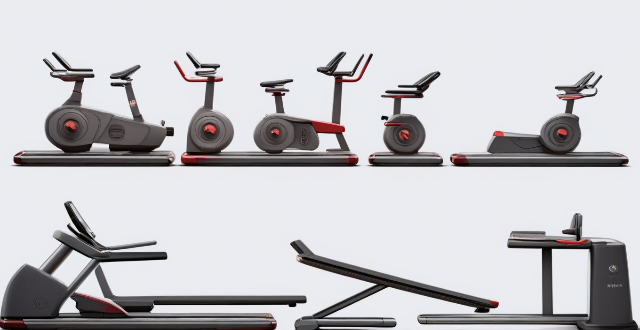
What are some examples of smart sports equipment ?
Smart sports equipment is revolutionizing physical activities by integrating technology to provide enhanced performance tracking, feedback, and engagement. Examples include wearable technology like fitness trackers and smart clothing, smart gym equipment such as connected weights and machines, interactive flooring, virtual reality and augmented reality apps, and smart balls and other sports gear. These devices are making it easier for athletes and enthusiasts to monitor their progress, optimize their training, and enjoy new levels of engagement in their chosen activities.

How has automation changed the manufacturing industry ?
Automation has significantly impacted the manufacturing industry by increasing productivity, reducing costs, enhancing safety, and providing flexibility. It has also led to improved data collection and analysis but has shifted labor force needs and raised environmental considerations.

How have advancements in technology impacted sports equipment ?
Advancements in technology have significantly impacted sports equipment, revolutionizing materials, performance tracking, safety features, training methods, and customization options. Key areas of influence include: 1. **Material Innovations**: Introduction of lightweight and durable materials like carbon fiber and advanced plastics, as well as smart fabrics for performance wear and thermoregulation. 2. **Performance Tracking**: Development of wearable technology such as fitness trackers and GPS devices, along with biomechanical analysis tools like motion capture systems and sensor technology. 3. **Safety Enhancements**: Incorporation of impact sensors and smart concussion management in helmets, synthetic turf for fields, and energy-efficient LED lighting for courts. 4. **Training Aids**: Integration of Virtual Reality (VR) and Augmented Reality (AR) for simulation training and skill development, as well as data analytics for video analysis and biometric feedback. 5. **Equipment Customization**: Application of 3D printing for custom orthotics and jaw guards, and personalization of sports gear like batting gloves and cycling kits. These technological advancements continue to enhance athletic performance, safety, and enjoyment across various sports disciplines.

How has artificial intelligence contributed to the innovation of sports equipment ?
Artificial intelligence has significantly contributed to the innovation of sports equipment by improving its design, functionality, and performance. AI algorithms optimize sports equipment designs based on athlete data and feedback, generate personalized training programs, track performance through sensors and wearable devices, and develop advanced coaching tools. These advancements have transformed the way athletes train, compete, and perform, with more exciting developments expected in the future.

In what scenarios is it necessary to use chemical protective measures in an industrial setting ?
Industrial settings often require chemical protective measures to ensure worker safety. These scenarios include handling hazardous chemicals, working in confined spaces, performing maintenance on chemical process equipment, disposing of hazardous waste, and emergency response to chemical incidents. Workers must wear appropriate personal protective equipment (PPE) such as gloves, aprons, goggles, and respiratory protection devices to prevent exposure to harmful chemicals. Examples of these scenarios include manufacturing processes involving strong acids or bases, tank cleaning in the petrochemical industry, repairing valves or pipes in chemical processing plants, disposal of chemical waste at landfill sites, and firefighting and rescue operations during chemical fires or explosions. By implementing these chemical protective measures in relevant industrial scenarios, employers can help safeguard their employees from potential health hazards associated with chemical exposure.

What are some must-have sports equipment for runners ?
Running is a popular form of exercise that requires minimal equipment. However, having the right gear can make your running experience more comfortable, enjoyable, and safer. Here are some must-have sports equipment for runners: 1. **Running Shoes** - A good pair of running shoes will provide support, cushioning, and stability to your feet and ankles during your run. Look for shoes that fit well and are designed specifically for running. 2. **Socks** - Socks made from moisture-wicking materials like polyester or nylon can help keep your feet comfortable and blister-free during long runs. 3. **Running Clothes** - Choose clothing made from synthetic materials like polyester or nylon, which draw sweat away from your body and dry quickly. 4. **GPS Watch or Fitness Tracker** - A GPS watch or fitness tracker can help you keep track of your pace, distance, and other metrics while running. 5. **Hydration System** - A hydration system like a hydration belt, handheld water bottle, or hydration pack can help you stay hydrated during long runs in hot weather. 6. **Reflective Gear** - Wearing reflective gear is essential for staying visible to drivers and other pedestrians when running at night or in low-light conditions. 7. **Sun Protection** - Protect yourself from the sun's harmful UV rays by wearing a hat with a brim and applying sunscreen to exposed skin before heading out. 8. **Fuel and Nutrition** - For longer runs, carrying fuel and nutrition like energy gels, chews, or bars can help maintain your energy levels and prevent muscle cramps. Invest in quality equipment that suits your needs and preferences, and don't forget to replace worn-out items regularly to maintain their effectiveness and safety.

What are the advantages of using a drive motor in industrial equipment ?
Drive motors are crucial components in industrial equipment, offering advantages such as increased efficiency, improved accuracy and precision, flexibility and customization, reduced maintenance and downtime, enhanced safety, and environmental benefits. By optimizing processes for maximum productivity and energy savings, drive motors lead to reduced operating costs and increased profitability for businesses. They also provide precise control over machinery movements, allowing for accurate positioning and repeatable operations, which is particularly important in applications where precision is critical. Drive motors offer flexibility in adjusting the speed, direction, and torque of machinery, accommodating changes and meeting specific requirements. Modern drive motors are designed with reliability and durability, minimizing downtime and increasing productivity. They can also be equipped with safety features to prevent accidents and injuries. Finally, drive motors have positive environmental impacts by improving efficiency and reducing energy consumption, leading to reduced greenhouse gas emissions and less waste material produced during manufacturing processes.
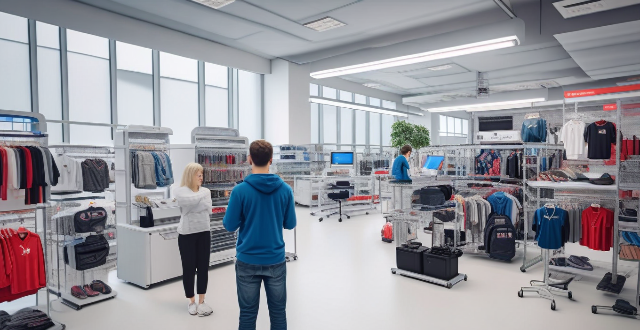
What role does data analytics play in the development of sports equipment ?
Data analytics is crucial in the development of sports equipment. It helps manufacturers collect and analyze data from sensors, wearables, and performance tracking systems to gain insights into how athletes use their equipment. This information can be used for performance evaluation, athlete feedback, customization, injury prevention, and marketing and sales strategies. By leveraging data analytics, manufacturers can create more effective and efficient sports equipment that meets the needs of athletes and consumers alike.

Can you suggest any durable and long-lasting sports equipment brands ?
Durable and Long-Lasting Sports Equipment Brands

What new materials are being used in the production of sports equipment ?
The sports industry is constantly evolving, and with that evolution comes the introduction of new materials used in the production of sports equipment. These materials are designed to enhance performance, increase durability, and improve safety for athletes. Some of the latest materials being used in sports equipment production include carbon fiber, titanium, aerogel, Kevlar, and polyurethane foam. Carbon fiber is lightweight yet incredibly strong, making it ideal for use in items such as bicycle frames, tennis rackets, and golf clubs. Titanium is lightweight, corrosion-resistant, and extremely durable. Aerogel is incredibly light yet strong enough to support significant weight. Kevlar is known for its exceptional strength and heat resistance. Polyurethane foam provides excellent cushioning and shock absorption properties. As technology advances and athletes demand better performance from their gear, we can expect to see even more innovative materials being developed and incorporated into sports equipment production.

How might AI impact the development of new sports equipment and gear ?
AI is revolutionizing the sports equipment industry by optimizing performance, enhancing safety, and enabling customization. It analyzes data to improve club design, predict ball trajectories, and monitor athlete safety with smart sensors. AI also personalizes equipment like running shoes based on gait analysis and adapts to individual needs during use. Additionally, it aids training and coaching through shooting analyzers and virtual coaches. Wearable technology with AI tracks body metrics and optimizes training. As AI advances, further innovations in sports equipment are anticipated.

What sports equipment do I need for a complete home gym setup ?
Setting up a home gym requires careful consideration of various types of sports equipment to ensure a comprehensive workout routine. Here's a summary of the key components: 1. **Cardiovascular Equipment**: Includes treadmills, ellipticals, stationary bikes, and rowing machines for endurance and cardio training. 2. **Strength Training Equipment**: Dumbbells, weight plates, barbells, kettlebells, and resistance bands are essential for building muscle mass and overall strength. 3. **Bodyweight Training**: Pull-up bars, parallette bars, and wall-mounted rings facilitate calisthenics exercises using one's body weight as resistance. 4. **Stretching and Recovery**: Foam rollers and yoga mats aid in muscle recovery, flexibility improvement, and floor exercises. 5. **Additional Items**: An exercise bench, jump rope, and a timer or app can complement your workouts with versatility and intensity tracking. Space availability and budget should guide your choices, allowing you to start with basics and expand gradually. With the right selection of equipment, you can create a well-rounded home gym that supports all aspects of fitness and wellness.

What equipment do I need to start with food photography ?
Starting with food photography requires essential equipment such as a camera with manual controls, macro capability, and RAW support; lenses including macro, standard zoom, and prime lenses for focus control and depth of field; a tripod for stability especially in low light; lighting equipment like softboxes, reflectors, and continuous lighting for shaping and controlling light on the subject; backgrounds and surfaces that enhance the mood and style; props and accessories to add context and interest; and post-processing software for image refinement. While gear is important, creativity and passion are equally crucial for capturing beautiful food images.

Is there a difference between consumer-grade and professional-grade sports monitoring equipment ?
This article explores the differences between consumer-grade and professional-grade sports monitoring equipment, focusing on accuracy, features, durability, and price. It provides examples of both types of devices, highlighting their key characteristics and target audiences.

What equipment do I need to start making unboxing videos ?
To start making unboxing videos, you'll need: 1. A camera or smartphone with at least 1080p resolution, image stabilization, and manual settings for clear, stable footage. 2. A tripod or gimbal to ensure steady shots and easy adjustments. 3. A microphone that provides clear audio and is easily connectable to your recording device. 4. Lighting equipment like softboxes, LED ring lights, and reflectors for even illumination. 5. A simple, clean background that is consistent across videos for brand recognition. 6. User-friendly editing software with features like color correction and audio mixing. 7. Extra accessories such as high-speed memory cards, spare batteries, and lens cleaning kits. 8. Props and tools for unboxing, including a letter opener, gloves, and measurement tools. Remember, while having the right equipment is crucial, your creativity, presentation skills, and consistency in publishing content are also key factors in the success of your unboxing channel.

What kind of equipment do sports rehabilitation centers use in their treatments ?
Sports rehabilitation centers employ a range of equipment to aid athletes in injury recovery and performance enhancement, including therapeutic modalities like hot/cold packs, ultrasound, electrical stimulation, and laser therapy. Manual therapy tools such as foam rollers, massage tables, spinal traction tables, resistance bands, and weights are used. Rehabilitation machines include treadmills, exercise bikes, ellipticals, and rowing machines. Assessment tools encompass gait analysis systems, force plates, range of motion devices, and strength testing equipment. The variety of equipment is chosen based on the individual needs of the injured athlete, the type of injury, and the phase of recovery.